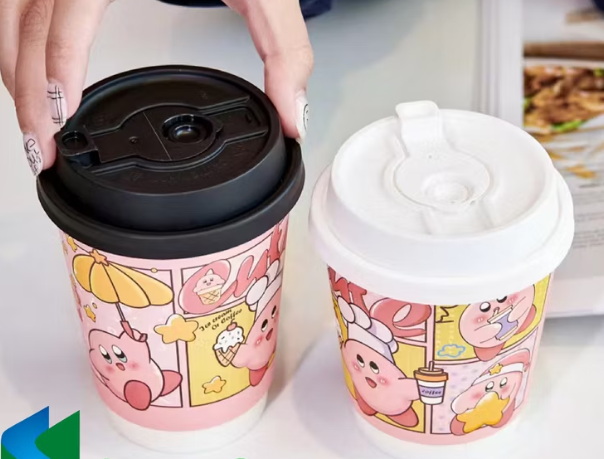
Content Menu
● Understanding the Basics: Reusable Cup vs Disposable Cup
>> What Are Reusable Cups?
>> What Are Disposable Cups?
● Lifespan Comparison: How Long Do They Really Last?
>> Disposable Cups
>> Reusable Cups
● Environmental Impact: Reusable Cup vs Disposable Cup
>> Production and Resource Use
>> Waste Generation
>> Carbon Footprint
● Cost Analysis: Reusable Cup vs Disposable Cup
>> Upfront and Ongoing Costs
● Practical Considerations: Convenience, Hygiene, and Branding
>> Convenience
>> Hygiene
>> Branding and Marketing
● Sustainability in Practice: Real-World Impact
>> Life Cycle Assessments
>> Policy and Regulation Trends
● Challenges and Limitations
>> Reusable Cup Challenges
>> Disposable Cup Challenges
● The Numbers: How Many Uses Make a Difference?
● Case Studies: Businesses and Communities
>> Business Benefits
>> Consumer Behavior
● Conclusion
● FAQ
>> 1. How many times do I need to use a reusable cup to make it more sustainable than a disposable cup?
>> 2. Are disposable cups recyclable?
>> 3. What are the main environmental benefits of reusable cups?
>> 4. Do reusable cups have any disadvantages?
>> 5. Which is more cost-effective for businesses: reusable cup vs disposable cup?
● Citations:
In the ongoing debate about sustainability and environmental responsibility, the question of whether reusable cups truly last longer-and provide more benefits-than disposable cups is more relevant than ever. With billions of single-use cups discarded annually and growing concern over waste and resource consumption, individuals and businesses alike are re-evaluating their choices. This article will explore the comparative lifespans, environmental impacts, costs, and practicalities of reusable cups versus disposable cups, providing a comprehensive analysis for consumers, businesses, and policymakers.

Understanding the Basics: Reusable Cup vs Disposable Cup
What Are Reusable Cups?
Reusable cups are designed for multiple uses and are typically made from durable materials such as stainless steel, ceramic, glass, or high-grade plastics. Their primary purpose is to withstand repeated washing and handling, making them suitable for daily use over months or even years[6][5].
What Are Disposable Cups?
Disposable cups, on the other hand, are intended for single use. Commonly made from paper with a plastic or wax lining, plastic, or foam, they are designed for convenience and are discarded after one use[4][6]. While lightweight and practical for events or takeout, their environmental footprint is significant due to the vast quantities produced and discarded each year[5][10].
Lifespan Comparison: How Long Do They Really Last?
Disposable Cups
- Single Use Only: As the name suggests, disposable cups are used once and then thrown away. Their lifespan is measured in minutes or hours, from the moment a drink is poured to when the cup is discarded[6].
- Environmental Persistence: While their practical use is short-lived, disposable cups can persist in landfills for decades due to plastic linings that hinder biodegradation and recycling[10].
Reusable Cups
- Multiple Uses: Reusable cups are engineered for longevity. Depending on the material and care, a reusable cup can last from several months to many years. For example, a stainless steel cup can endure hundreds or even thousands of uses, while ceramic and glass cups may last years if not broken[5][6].
- Break-Even Point: The environmental advantage of a reusable cup depends on how many times it is reused. Studies show that a standard reusable plastic cup must be used at least 20 times to offset its manufacturing impact compared to a disposable paper cup, while a stainless steel cup may require over 100 uses[2][8][10].
Environmental Impact: Reusable Cup vs Disposable Cup
Production and Resource Use
- Disposable Cups: The production of disposable cups consumes significant amounts of water, energy, and raw materials. For each drink served, a new cup must be manufactured, supplied, and disposed of, resulting in a high cumulative environmental impact[1][5].
- Reusable Cups: Manufacturing reusable cups is more resource-intensive per unit, but these costs are distributed over many uses. Washing reusable cups does consume water and energy, but studies indicate that the water used to produce a disposable cup is much greater than that used for washing a reusable cup after each use[2].
Waste Generation
- Disposable Cups: Billions of disposable cups end up in landfills or the ocean every year. Their plastic linings make recycling difficult, and only a small fraction are actually recycled[5][10].
- Reusable Cups: By design, reusable cups significantly reduce waste. A single reusable cup can replace hundreds or thousands of disposable cups over its lifetime[3][5].
Carbon Footprint
- Disposable Cups: The carbon emissions associated with disposable cups accumulate rapidly due to their single-use nature. For example, three disposable plastic cups generate 210g CO2e, while a reusable cup used three times (including washing) generates 180.4g CO2e-already a 15% reduction[1].
- Reusable Cups: The initial carbon footprint is higher, but with consistent reuse, the average carbon emissions per use drop dramatically. After the break-even point (20–100 uses, depending on material), reusable cups outperform disposables in carbon savings[2][8].
Cost Analysis: Reusable Cup vs Disposable Cup
Upfront and Ongoing Costs
| Aspect | Reusable Cup | Disposable Cup |
| Upfront Cost | Higher (per unit) | Low (per unit) |
| Ongoing Cost | Lower (over time, due to reuse) | High (constant repurchasing) |
| Cleaning/Labor | Requires washing (labor, utilities) | None (but generates waste) |
| Replacement | Occasional (breakage, loss) | Continuous (every use) |
- Reusable Cups: The initial investment is higher, but long-term savings are substantial. Businesses benefit from reduced purchasing and waste disposal costs, and individuals save by not constantly buying new cups[3][5][6].
- Disposable Cups: Although cheaper upfront, the need to continually purchase and dispose of cups leads to higher cumulative costs, especially for high-volume users[4][9].

Practical Considerations: Convenience, Hygiene, and Branding
Convenience
- Disposable Cups: Highly convenient for on-the-go use, events, and situations where washing facilities are unavailable. They save time and labor by eliminating the need for cleaning[4][9].
- Reusable Cups: Require cleaning and storage, which can be challenging in busy or space-limited environments. However, modern systems and dishwashing facilities can streamline this process for businesses[3][6].
Hygiene
- Disposable Cups: Single-use nature ensures a fresh, clean cup for every customer, reducing the risk of cross-contamination[9].
- Reusable Cups: Require diligent cleaning to maintain hygiene standards. If not properly washed, there is potential for contamination, especially in commercial settings[9].
Branding and Marketing
- Disposable Cups: Offer excellent opportunities for branding, as customers carry them outside the business, increasing visibility[9].
- Reusable Cups: Can also be branded, but the impact is generally limited to in-house use. Frequent washing may cause branding to fade over time[9][6].
Sustainability in Practice: Real-World Impact
Life Cycle Assessments
- Life cycle assessments (LCAs) consider the entire lifespan of a product, from raw material extraction to disposal. Reusable cups consistently outperform disposable cups in LCAs when used frequently and washed efficiently[2][8].
- The key is consistent reuse: the more often a reusable cup is used, the lower its per-use environmental impact becomes[8][10].
Policy and Regulation Trends
- Many countries are introducing regulations to reduce single-use plastics and encourage the adoption of reusable alternatives. Extended Producer Responsibility (EPR) policies are making waste generation more costly for businesses, further incentivizing the shift to reusables[3][5].
Challenges and Limitations
Reusable Cup Challenges
- Higher Upfront Cost: The initial purchase price can be a barrier, especially for small businesses or individuals on a tight budget[9].
- Cleaning and Labor: Requires investment in dishwashing equipment and labor, which can increase operational complexity[9].
- Breakage and Loss: Glass and ceramic cups are prone to breaking, and all reusable cups can be lost or misplaced, requiring periodic replacement[9].
- Storage: Reusable cups take up more space than stackable disposables, which can be an issue in small venues[9].
Disposable Cup Challenges
- Environmental Impact: The most significant drawback is the massive waste generated and the difficulty of recycling due to plastic linings[5][10].
- Long-Term Cost: For high-volume users, the ongoing cost of disposables quickly surpasses the investment in reusables[5][6].
The Numbers: How Many Uses Make a Difference?
- Plastic Reusable Cup: Needs at least 20 uses to break even with a paper disposable cup[2][8].
- Stainless Steel Cup: Requires over 100 uses to offset its higher manufacturing footprint[2][8].
- Ceramic and Glass Cups: Similar to stainless steel, these require frequent use to become environmentally superior to disposables[8].
- Washing Impact: Washing a reusable cup uses 0.5–1.5 liters of water, while manufacturing a disposable cup uses up to 20 times more water[2].
Case Studies: Businesses and Communities
Business Benefits
- Businesses that switch to reusable cups report reduced operational costs over time, lower waste disposal fees, and improved sustainability credentials[3][5].
- Some cities and festivals have adopted reusable cup systems, drastically reducing landfill waste and saving money on waste management[3][5].
Consumer Behavior
- The environmental and cost benefits of reusable cups are only realized if consumers consistently use and properly care for them. Education and incentives can help drive this behavior[2][8][10].
Conclusion
The answer to the question "Do reusable cups last longer than disposable cups?" is a resounding yes-both in terms of physical durability and environmental impact. While disposable cups serve a purpose in specific contexts, their single-use nature leads to significant waste and ongoing costs. Reusable cups, when used consistently and maintained properly, offer substantial advantages: they reduce waste, lower long-term costs, and minimize environmental harm after reaching their break-even point.
However, the benefits of reusable cups are only realized with regular use and efficient washing practices. For individuals and businesses committed to sustainability, investing in reusable cups is a practical and impactful step toward a cleaner, greener future.

FAQ
1. How many times do I need to use a reusable cup to make it more sustainable than a disposable cup?
You need to use a standard reusable plastic cup at least 20 times to break even with a disposable paper cup in terms of environmental impact. For stainless steel or ceramic cups, the break-even point can be over 100 uses[2][8][10].
2. Are disposable cups recyclable?
Technically, many disposable cups are recyclable, but their plastic linings often make the process difficult. Only specialized facilities can recycle them, and most disposable cups still end up in landfills[4][10].
3. What are the main environmental benefits of reusable cups?
Reusable cups reduce waste, conserve resources, and lower greenhouse gas emissions over their lifetime. They also minimize the need for constant manufacturing and disposal, which are resource-intensive processes[5][3][6].
4. Do reusable cups have any disadvantages?
Yes. Reusable cups require an upfront investment, regular cleaning, and storage space. They can also break or be lost, requiring occasional replacement. In commercial settings, maintaining hygiene can be more complex compared to disposables[9][6].
5. Which is more cost-effective for businesses: reusable cup vs disposable cup?
Reusable cups are more cost-effective in the long run due to reduced purchasing and waste disposal costs. While disposables are cheaper upfront, their ongoing costs quickly add up, especially for high-volume businesses[3][5][6].
Citations:
[1] https://www.green-goblet.com/reusable-vs-disposable/
[2] https://cuploop.com/are-reusable-cups-greenwashing/
[3] https://www.muuse.io/post/sustainable-sips-the-power-behind-a-reusable-coffee-cup
[4] https://www.supplysmiths.com/blogs/news/reusable-vs-disposable-cups-which-is-best-for-your-business
[5] https://promocups.eu/reusable-cups-vs-disposable-cups-the-benefits-of-reusable-cups/
[6] https://www.rdiplastics.com/en/plastic-containers/disposable-cup-or-reusable-cup/
[7] https://plastic.education/cups-single-use-disposable-vs-reusable-an-honest-comparison/
[8] https://www.anthropocenemagazine.org/2017/07/reusable-or-disposable-which-coffee-cup-has-a-smaller-footprint/
[9] https://disposabledesignstore.com/blog/reusable-vs-disposable-cups/
[10] https://irisgo.com/en/blogs/aktuelles-news/sind-mehrwegbecher-wirklich-nachhaltiger-als-einwegbecher
[11] https://sustainability.tufts.edu/wp-content/uploads/Comparativelifecyclecosts.pdf
[12] https://www.supplysmiths.com/blogs/news/reusable-vs-disposable-cups-which-is-best-for-your-business
[13] https://irisgo.com/en/blogs/aktuelles-news/sind-mehrwegbecher-wirklich-nachhaltiger-als-einwegbecher
[14] https://huskee.co/articles/10-reasons-to-switch-to-a-reusable-coffee-cup-today/
[15] https://www.kimecopak.ca/blogs/news/expiry-date-of-paper-cups
[16] https://kwench.com.au/blogs/the-blog/how-long-can-you-use-a-stainless-steel-reusable-coffee-cup
[17] https://irisgo.com/en-eu/blogs/aktuelles-news/sind-mehrwegbecher-wirklich-nachhaltiger-als-einwegbecher
[18] https://stack-cup.com/blogs/news/reusable-cups-vs-disposable-cups-whats-best-for-your-event
[19] https://www.braskem.com.br/Portal/Principal/arquivos/Estudos/AF_Braskem_ACV_ING.pdf
[20] https://www.goodstartpackaging.com/faq/product-questions/what-is-the-shelf-life-of-your-products/
[21] https://www.verive.eu/downloads/Verive-Life-Cycle-Analysis-infographic-EN.pdf
[22] https://uk.huskee.co/blog/reusable-vs-disposable-cups-which-is-best-for-your-office/
[23] https://www.magnumpackaging.co.uk/disposable-cups-faqs-i25
[24] https://www.limepack.eu/blog/sustainability-en/environmental-impacts-of-disposable-cups-and-reusable-cups
[25] https://www.lansincommodity.com/info/cup-conundrums-common-questions-about-plastic-87314374.html
[26] https://verive.eu/lca-reusable-food-packaging-vs-disposable-food-packaging/
[27] https://www.bfr.bund.de/en/frequently_asked_questions_about_the_use_of_customers_own_refillable_cups_for__coffee_to_go_-204853.html
[28] https://www.bettercup.com.au/whitepaper-singleuse-vs-reusable-cups
[29] https://greencupnordic.com/sustainability/reusable-vs-disposable/
[30] https://www.hotpackglobal.com/blogs/some-faqs-about-paper-cups/
[31] https://www.tasteliving2019.com/environmental-benefits-of-using-reusable-cups
[32] https://www.agreenproducts.ca/reusable-vs-disposable-insulated-cups-with-lids-what-works-best/
[33] https://www.picplast.com.br/Portal/Principal/arquivos/Estudos/AF_Braskem_ACV_ING.pdf
[34] https://www.packman.sg/blogs/enhancing-sales-through-thoughtful-mooncake-packaging-unlocking-the-magic-of-mid-autumn-festival/packman-what-is-the-typical-lifespan-of-a-paper-cup-and-can-it-be-reused
[35] https://au.keepcup.com/media/KeepCup%20LCA%20Report.pdf

















